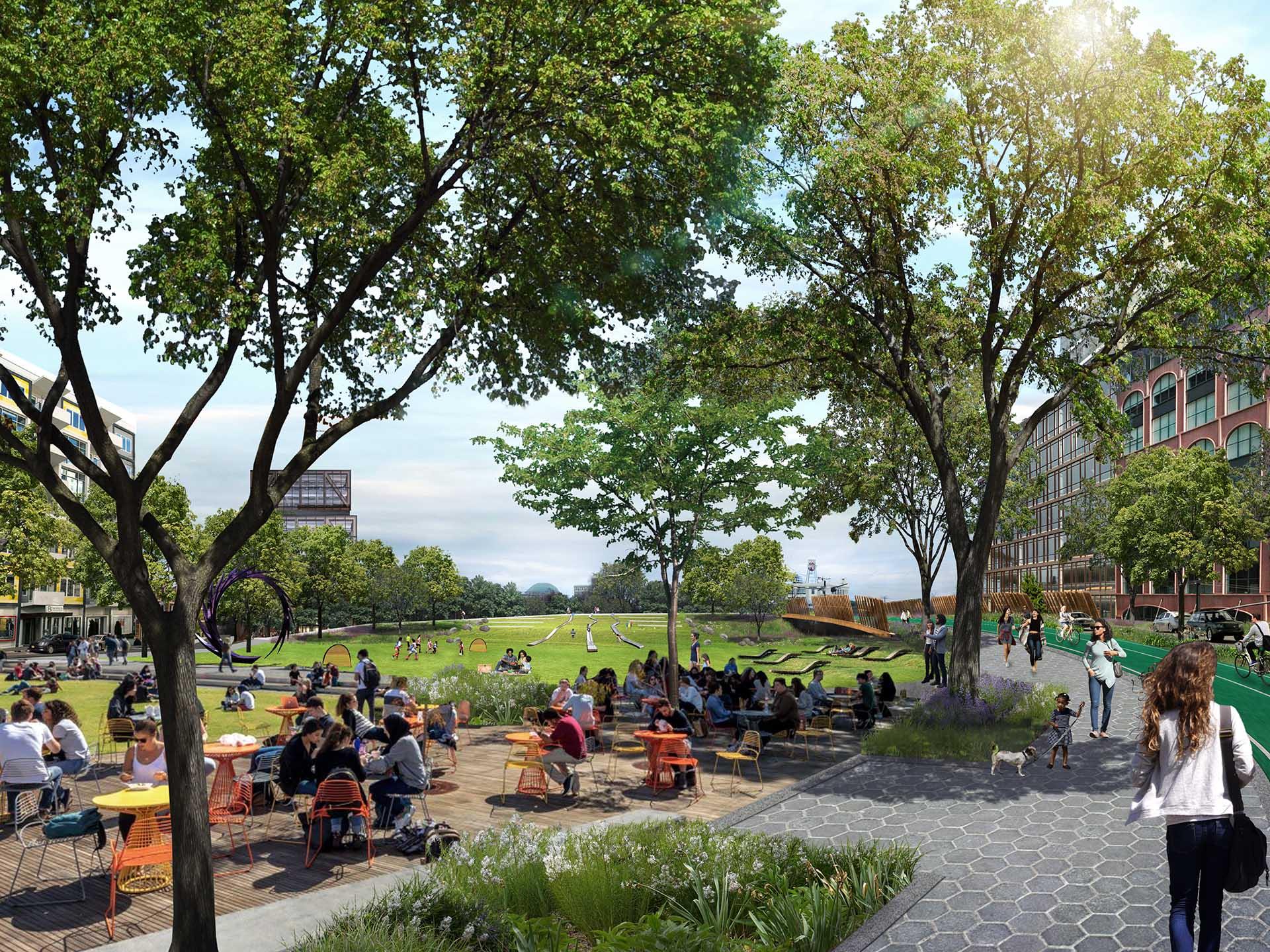
Prioritizing equity in the planning process
We helped Richmond prioritize equity by embedding the principles of ED&I and environmental justice into its master plan framework.
How we helped Richmond prioritize equity and reimagine the planning process through the lens of social and environmental justice
In 2016, we collaborated with the City of Richmond, Virginia to develop a master plan charting a path toward an equitable, sustainable future in time for the city’s 300th birthday in 2037. The principles of equity, diversity, inclusion and environmental justice were embedded into the plan’s framework. The resulting plan Richmond 300: A Guide for Growth is not merely a roadmap for expansion, it is rooted in the desire to combat systemic issues of socio-economic disenfranchisement.
Building from the ground up
From inception to implementation, the city actively sought community feedback to promote transparency. To consider the needs of underserved neighborhoods historically shut out of planning efforts, the team met with residents in their community - at churches, community centers and coffee shops. This bottom-up approach allowed new voices to be discovered and heard, and diversified the planning data set with first-hand, lived experiences of all residents. These viewpoints are now being implemented in the form of enhanced services and new capital improvement projects.
This master plan project succeeded in making issues of equity and inclusion intrinsic to the planning process by identifying where environmental justice issues overlapped with locations of underserved populations. Actions already being implemented include remediating heat islands, improving access to government and community services, and enhancing wellbeing, mobility and public transportation offerings.
Start with day zero
Equity principles could not be retrofitted later into the projects that would result from the plan, every project had to be imbued with them from the very beginning of the planning process — or day zero as we like to call it.
With the values established and the vision defined, only then would the planning process be ready to move into day one, which involved developing the concepts for the new master plan. We ensured that these values were incorporated into every physical project, whether it involved creating new parks and recreation facilities, opening new community centers in neighborhoods that had been left behind, or determining where new schools would be located.
Bringing the plan to life
The Richmond 300 master plan encompasses 17 goals, 70 objectives and more than 400 strategies, but we and the city recognized that the plan brings value only when its recommendations are implemented.
Implementation works best when the public is able to see their ideas brought to life in the master plan, with timely communication. Showing that the needs of a broad cross section of residents – as expressed by those who participated in the plan’s development -- were addressed in the plan is also important. By having a mix of projects ready to deliver — from smaller, more affordable projects such as parklets and sidewalks to larger, wish list projects like community centers — the Richmond 300 master plan serves as a scalable, replicable case study of how to prioritize and address complex socio-economic issues on a limited municipal budget.